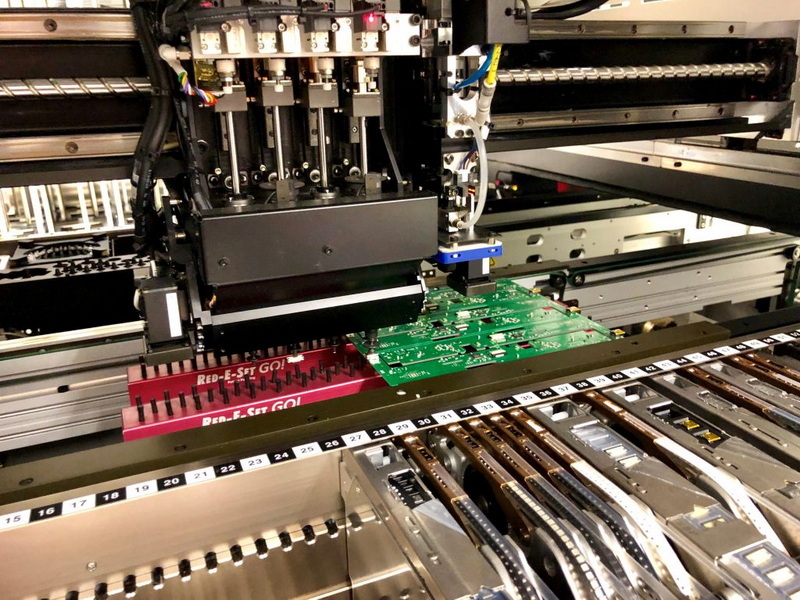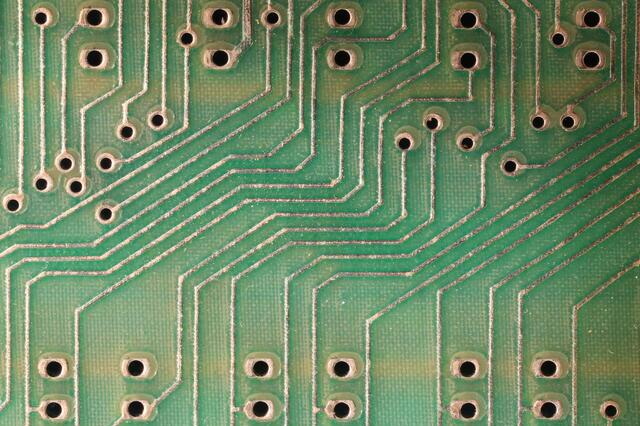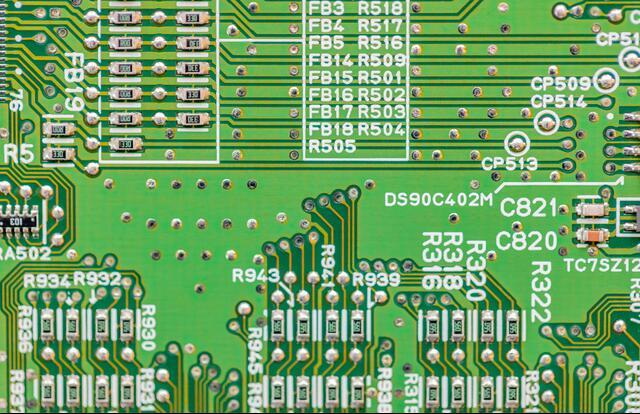Content Menu
● Understanding SMT Components Sizes
● Common SMT Component Sizes
● Detailed Overview of Common Sizes
>> 01005 (0.4 mm x 0.2 mm)
>> 0201 (0.6 mm x 0.3 mm)
>> 0402 (1.0 mm x 0.5 mm)
>> 0603 (1.6 mm x 0.8 mm)
>> 0805 (2.0 mm x 1.25 mm)
>> 1206 (3.2 mm x 1.6 mm)
● Choosing the Right SMT Component Size
● Impact of SMT Component Sizes on PCB Design
● Industry Standards for SMT Component Sizes
● Future Trends in SMT Component Sizes
● Challenges with Smaller SMT Components
● Best Practices for Designing with SMT Components
● Conclusion
● FAQ
>> 1. What does SMD stand for?
>> 2. How do I choose the right SMD size?
>> 3. What are common applications for smaller SMD sizes?
>> 4. Are there any challenges associated with using small SMDs?
>> 5. What standards govern SMT component sizes?
● Citations:
Surface Mount Technology (SMT) has revolutionized the electronics manufacturing industry by allowing for more compact and efficient designs. Understanding the standard sizes of SMT components is crucial for PCB assembly, as it directly impacts the performance, reliability, and manufacturability of electronic devices. This article delves into the various sizes of SMT components, their applications, and how to choose the right size for your PCB assembly needs.

Understanding SMT Components Sizes
SMT components are categorized based on their physical dimensions, which are typically expressed in both imperial (inches) and metric (millimeters) units. The size codes are often a combination of numbers that indicate the length and width of the component.
- Imperial Codes: Represented in inches, e.g., 0201 means 0.02 x 0.01 inches.
- Metric Codes: Represented in millimeters, e.g., 0201 means 0.6 x 0.3 mm.
The choice of size is critical as it influences not only the layout and design of the PCB but also the methods used for assembly and soldering.
Common SMT Component Sizes
The most commonly used SMT component sizes include:
- 01005: 0.016 x 0.008 inches (0.4 x 0.2 mm)
- 0201: 0.02 x 0.01 inches (0.6 x 0.3 mm)
- 0402: 0.04 x 0.02 inches (1.0 x 0.5 mm)
- 0603: 0.06 x 0.03 inches (1.6 x 0.8 mm)
- 0805: 0.08 x 0.05 inches (2.0 x 1.25 mm)
- 1206: 0.12 x 0.06 inches (3.2 x 1.6 mm)
These sizes are widely used across various applications, from consumer electronics to industrial devices.
Detailed Overview of Common Sizes
01005 (0.4 mm x 0.2 mm)
The 01005 size is one of the smallest available and is typically found in high-density applications such as smartphones and hearing aids where space is extremely limited.
- Applications: Mobile devices, medical implants.
- Assembly Challenges: Requires advanced machinery due to its tiny size.
0201 (0.6 mm x 0.3 mm)
The 0201 size offers a balance between compactness and ease of handling, making it suitable for a range of applications.
- Applications: Wearable electronics, medical devices.
- Assembly Challenges: More manageable than smaller sizes but still requires precision.
0402 (1.0 mm x 0.5 mm)
The 0402 size is popular for general-purpose passive components like resistors and capacitors.
- Applications: Smartphones, tablets.
- Assembly Challenges: Requires careful solder paste application to avoid bridging.
0603 (1.6 mm x 0.8 mm)
The 0603 size is widely used in consumer electronics due to its balance between size and ease of use.
- Applications: Automotive systems, industrial electronics.
- Assembly Challenges: Relatively easy to handle during assembly processes.
0805 (2.0 mm x 1.25 mm)
The 0805 size is larger and can handle higher power loads, making it suitable for various applications.
- Applications: Low to moderate power circuits.
- Assembly Challenges: Easier to assemble compared to smaller sizes.
1206 (3.2 mm x 1.6 mm)
The largest among the common sizes, the 1206, is often chosen for applications requiring better thermal dissipation.
- Applications: Power LEDs, automotive controls.
- Assembly Challenges: Generally easier due to its size but still requires careful placement.
Choosing the Right SMT Component Size
Selecting the appropriate SMT component size involves considering several factors:
- Space Constraints: Smaller sizes like 01005 and 0201 are ideal for compact devices.
- Ease of Assembly: Larger sizes such as 0603 and above are typically easier to handle during manufacturing.
- Power Handling Requirements: For applications needing higher power or heat dissipation, larger components like 1206 should be considered.
Impact of SMT Component Sizes on PCB Design
The choice of SMT component sizes significantly affects PCB design aspects such as:
- Layout Efficiency: Smaller components allow for more compact layouts but require precise placement techniques.
- Thermal Management: Larger components can dissipate heat more effectively, which is critical in high-power applications.
- Manufacturing Costs: Smaller components may increase assembly costs due to the need for advanced machinery and techniques.

Industry Standards for SMT Component Sizes
Several industry standards guide the design and implementation of SMT components:
- IPC-7351: Provides guidelines for designing footprints for surface mount devices, ensuring compatibility with various component sizes.
- JEDEC Standards: Define specifications for semiconductor packaging dimensions, including those used in SMT assembly.
Adhering to these standards helps ensure that components fit correctly on PCBs and function as intended within electronic devices.
Future Trends in SMT Component Sizes
As technology advances, there is a growing trend towards smaller component sizes due to the demand for miniaturization in electronic devices:
- Increased Integration: Components are becoming more integrated with multiple functions combined into a single package, reducing the overall number of components needed on a PCB.
- Advanced Manufacturing Techniques: Innovations in manufacturing processes allow for even smaller component sizes without compromising performance or reliability.
- Emerging Applications: New markets such as IoT devices require ultra-small components that can fit into increasingly compact enclosures while maintaining functionality.
Challenges with Smaller SMT Components
While smaller SMT component sizes offer benefits such as reduced space requirements and increased design flexibility, they also present unique challenges:
- Precision Placement Requirements: As component sizes decrease, the tolerance levels for placement accuracy become tighter, necessitating high-quality pick-and-place machines that can operate at high speeds with minimal error rates.
- Soldering Difficulties: Smaller components can be more challenging to solder due to their reduced pad area, increasing the risk of cold solder joints or insufficient solder coverage if not handled correctly.
- Inspection Complexity: Visual inspection methods may struggle with detecting defects on smaller components, requiring advanced automated optical inspection (AOI) systems that can accurately assess solder joints and component alignment.
Best Practices for Designing with SMT Components
To ensure successful integration of SMT components into your PCB designs, consider following these best practices:
1. Footprint Design:
- Ensure that footprints conform to IPC standards to guarantee compatibility with manufacturing processes.
- Include adequate pad sizes that accommodate both soldering techniques and thermal expansion characteristics.
2. Component Placement:
- Optimize placement by grouping similar components together to facilitate efficient assembly processes.
- Maintain sufficient spacing between components to prevent solder bridging during reflow soldering.
3. Thermal Considerations:
- Incorporate thermal reliefs or vias in designs where high-power components are used to manage heat dissipation effectively.
- Evaluate thermal performance during simulation stages to anticipate potential overheating issues before production.
4. Testing Strategies:
- Implement comprehensive testing strategies early in development phases using prototypes with actual SMT components to identify potential issues related to size constraints or assembly challenges.
- Utilize both functional testing and automated inspection techniques post-manufacturing to ensure quality control standards are met.
5. Collaboration with Manufacturers:
- Work closely with your contract manufacturer during design phases to understand their capabilities regarding specific component sizes and any potential limitations they may have concerning assembly processes or materials used.
Conclusion
Understanding standard SMT component sizes is essential for effective PCB assembly and design in modern electronics manufacturing. The choice between different sizes impacts not only the physical layout but also the performance and reliability of electronic devices. As technology advances toward more compact designs, familiarity with these standards will become increasingly important for engineers and manufacturers alike.
By incorporating best practices into your design process while remaining aware of industry trends and challenges associated with smaller component sizes, you can optimize your PCB assemblies for performance and manufacturability while ensuring compliance with established standards.

FAQ
1. What does SMD stand for?
SMD stands for Surface Mount Device, which refers to electronic components designed to be mounted directly onto the surface of PCBs rather than through holes.
2. How do I choose the right SMD size?
Choosing the right SMD size depends on your application requirements, available space on the PCB, ease of assembly, and power handling needs.
3. What are common applications for smaller SMD sizes?
Smaller SMD sizes like 01005 and 0201 are commonly used in high-density applications such as smartphones, wearables, and medical devices where space is at a premium.
4. Are there any challenges associated with using small SMDs?
Yes, small SMDs require advanced pick-and-place machinery and precise soldering techniques due to their tiny dimensions, making manual soldering impractical.
5. What standards govern SMT component sizes?
Standards such as IPC-7351 provide guidelines for designing footprints for surface mount devices to ensure compatibility with various component sizes during PCB assembly.
Citations:
[1] https://www.ultralibrarian.com/2024/01/25/smt-components-size-chart-what-to-know-ulc
[2] https://core-emt.com/imperial-code-vs-metric-code-smd-components-sizes
[3] https://www.pcbonline.com/blog/smd-sizes.html
[4] https://www.pcbdirectory.com/community/smd-size-codes-a-guide-to-understanding-electronic-component-dimensions
[5] https://www.protoexpress.com/kb/different-smd-component-package-sizes/
[6] https://www.nexpcb.com/blog/the-basics-of-smt-material-package-type
[7] https://www.electronics-notes.com/articles/electronic_components/surface-mount-technology-smd-smt/packages.php




















